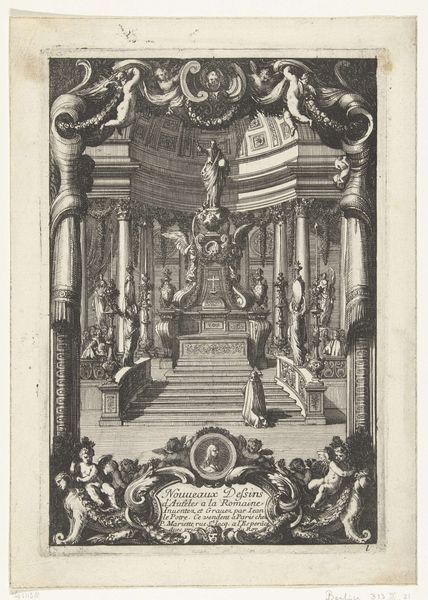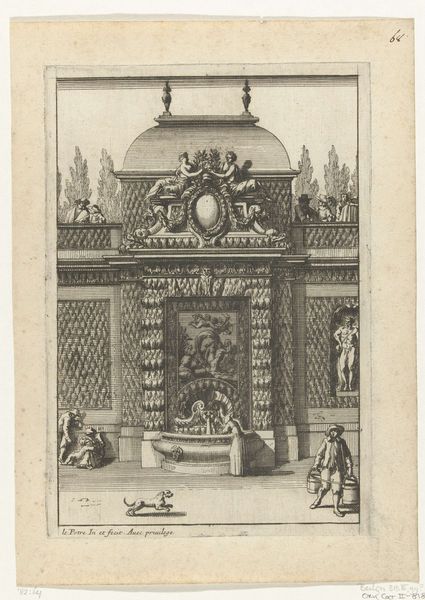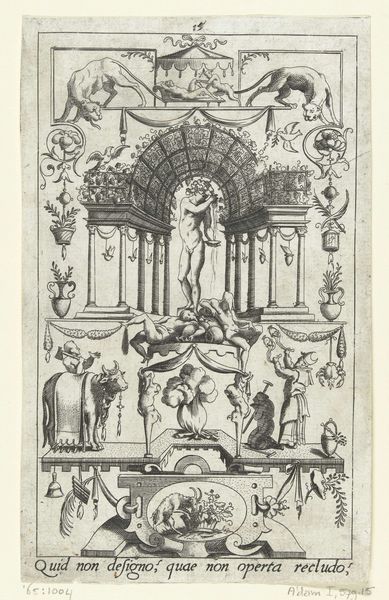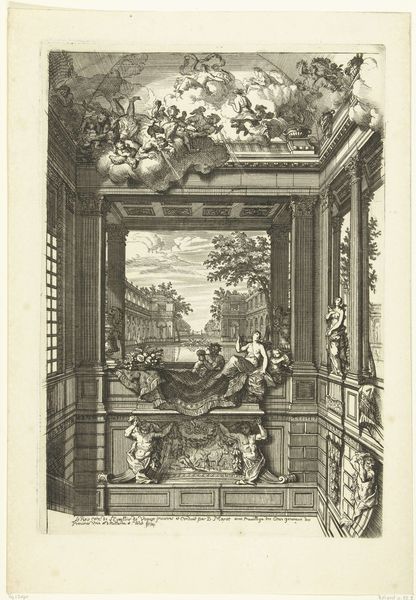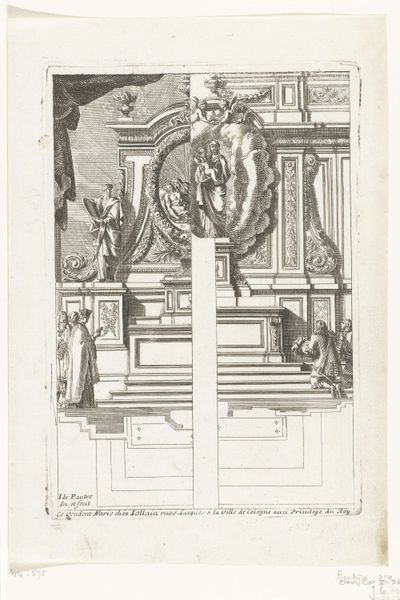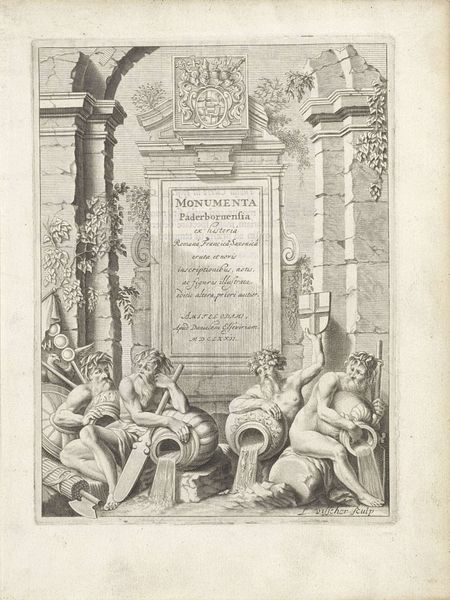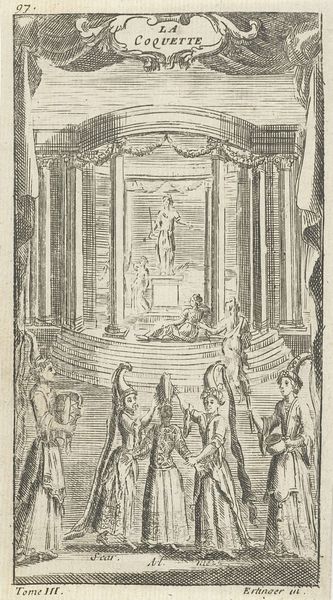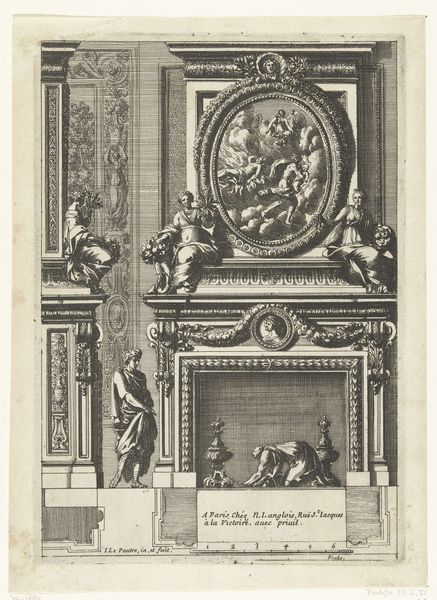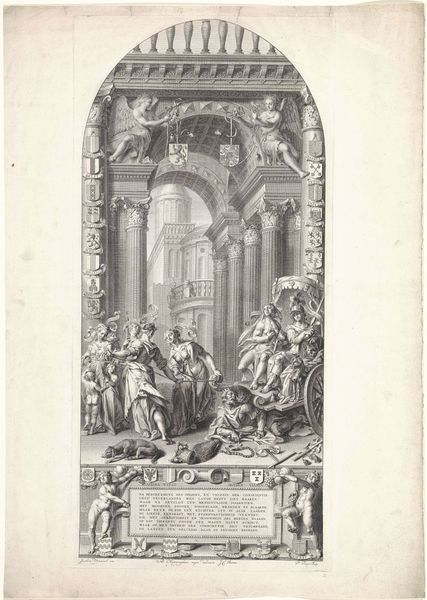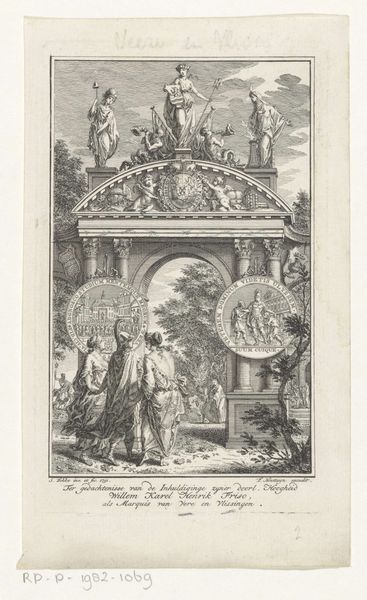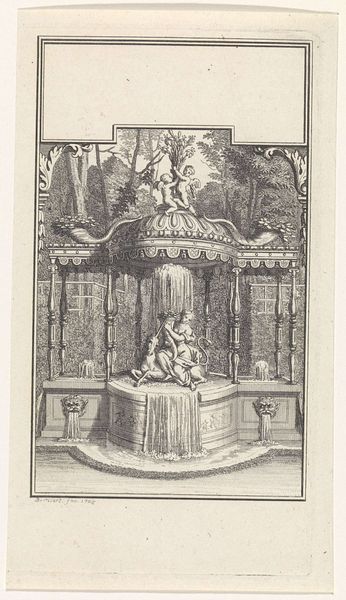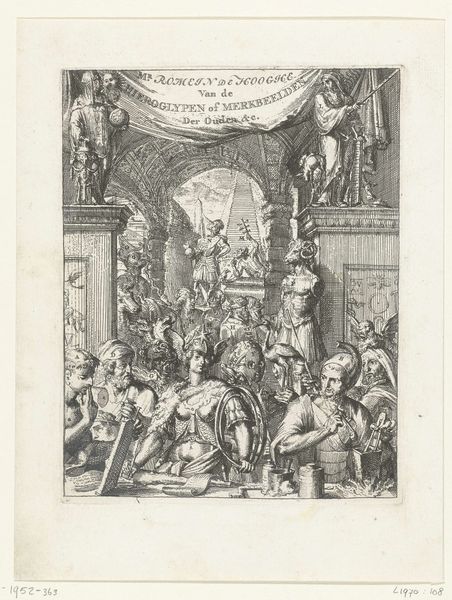
print, engraving
#
baroque
# print
#
landscape
#
cityscape
#
history-painting
#
engraving
Dimensions: height 243 mm, width 164 mm
Copyright: Rijks Museum: Open Domain
Editor: This is Sieuwert van der Meulen's "Neptunusfontein," created in 1707. It's an engraving, so a print, and it depicts what looks like a cityscape with a prominent fountain. It has an overall staged feeling, very theatrical. How do you interpret this work? Curator: As a materialist, I see this print primarily as evidence of its own production and the systems surrounding that. Engravings allowed for the mass reproduction of images, impacting the accessibility of art and information in the 18th century. It challenges the notion of the "unique" artwork, which often favors painting and sculpture, made with rare material like lapis lazuli, for instance, due to the accessibility of mass printing. Editor: So the *making* of it is really key. The process influenced its value and purpose. Curator: Exactly. Consider the labor involved – the engraver’s skill, the workshop structure, and the market for these images. What narratives about labor and material extraction can you glean by contrasting such modes of display, creation, and circulation? Editor: That's interesting. It's also about thinking of artistic and decorative expression within that early industrial framework? Curator: Precisely. Van der Meulen depicts a lavish fountain and city life, potentially reinforcing ideas of power and opulence; however, the print itself is part of an emerging industry that democratizes images and shifts artistic value away from singular, precious objects. What’s printed here can go everywhere at a small scale. Editor: I hadn’t considered that tension before, between the representation and the means of its distribution. It’s almost a commentary built into the very object. Curator: Exactly. Analyzing art through this material lens reveals the complex social and economic forces at play. The subject matter is less important than the making of the image, and the systems of economy within which images get shared and copied, over and over.
Comments
No comments
Be the first to comment and join the conversation on the ultimate creative platform.
